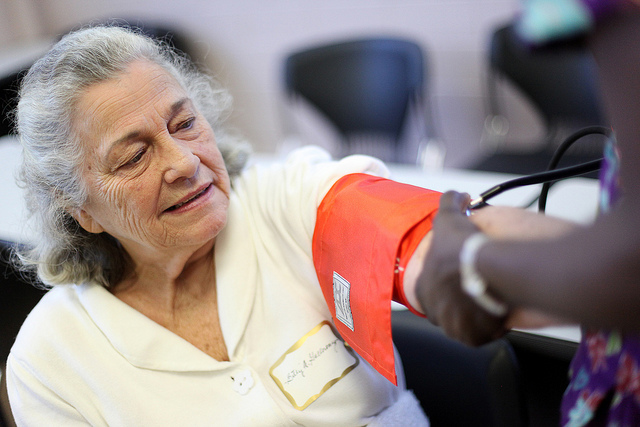Lifestyle Changes to Control Pre-hypertension

Pre-hypertension, otherwise known as slightly elevated blood pressure, can increase your risk for a heart attack, stroke, or heart failure if you don’t make some positive changes, such as exercising and eating healthier.
Some patients learn of their pre-hypertensive condition by attending a screening clinic at a health fair or visiting a self-service booth or machine that checks blood pressure. Most methods for controlling pre-hypertension involve making healthier lifestyle choices, but you should visit your doctor to confirm the diagnosis and make sure that the condition is not actually worse than you believe. While you’re there, work with your doctor to create a management plan that will best suit your particular health situation.
Understanding blood pressure
Blood pressure is the force of blood against the artery walls. When your blood pressure is taken, you receive two numbers. The systolic pressure (top number) measures the pressure in your arteries as your heart beats. The diastolic pressure (bottom number) gauges the pressure in your arteries between beats. A person is considered to have pre-hypertension if his or her systolic pressure is between 120 and 139 or the diastolic pressure is between 80 and 89.
A pre-hypertension diagnosis means that although you don’t have high blood pressure now, you are likely to develop it in the future. Pre-hypertension is not so much an illness as it is a warning that you should alter your lifestyle. High blood pressure is dangerous because it causes the heart to work too hard and it can lead to atherosclerosis, or hardening of the arteries. Most people develop high blood pressure at some point in their lives, which is why it’s important to understand the risk factors and how to overcome them.
Treating pre-hypertension
Risk factors for pre-hypertension include abnormal cholesterol levels, diabetes, a sedentary lifestyle, obesity, tobacco abuse, and mental stress. The most effective treatment is lifestyle changes – not medication*. Here are some ways to combat pre-hypertension:
Healthy diet
The Dietary Approaches to Stop Hypertension – or DASH – diet is based on reducing sodium intake to fewer than 2,300 milligrams per day, along with a reduction in animal fat and processed food. DASH diet recommendations include:
- Whole grains (6-8 servings daily)
- Vegetables (4-5 servings daily)
- Fruit (4-5 servings daily)
- Fat-free or reduced-fat milk or dairy products (2-3 servings daily)
- Lean meat, fish, and poultry (6 or fewer servings daily)
- Nuts, seeds, and legumes (4-5 servings per week)
- Fats and oils (2-3 servings daily)
- Sweets and sugars (5 or fewer per week)
These suggestions are formulated to provide a diet rich in calcium, magnesium, potassium, and vitamins, while limiting saturated fat and cholesterol. DASH dieters are also advised to eat about 4,700 milligrams, or two servings, of potassium per day. Options include one cup of cantaloupe, one banana, eight ounces of orange juice, about 15 baby carrots, eight ounces of skim milk, or six ounces of nonfat yogurt.
Moderate alcohol
Heavy drinking can exacerbate several health conditions, while reasonable amounts could be heart-healthy. Studies have shown that people who drink small amounts of alcohol (no more than two drinks per day for men and one for women) have higher “good” cholesterol and better heart health than those who don’t. If you or a family member has a history of substance abuse, however, alcohol is not recommended.
Quit smoking
Smoking can significantly elevate your blood pressure. CDPHP offers several resources to help you quit. The CDPHP Care Team can help get you started.
Manage stress
Studies suggest that meditation and relaxation techniques can help you reduce stress at work and at home while lowering your blood pressure. CDPHP offers several options to help you deal with stress, anxiety, or other emotional health issues.
Exercise
You probably know that regular exercise and maintaining a healthy weight are vital for good health and that they can positively affect many health conditions, including high blood pressure. Try taking a brisk walk, cycling, swimming, etc. at least five times per week for the best results.
The good news is that if your physician says that you have pre-hypertension, you have options to prevent it from morphing into high blood pressure. The even better news is that these lifestyle changes will benefit your overall health.
*People diagnosed with hypertension (not pre-hypertension) should take their medication as prescribed by their doctor.
References: Mayo Clinic, National Heart, Lung and Blood Institute / U.S. Department of Health & Human Services, Harvard Medical School Family Health Guide
 The Daily Dose
The Daily Dose
Comments are closed.